20 fish that clean your tank as well as look pretty
Keep your aquarium looking spick and span with these algae-loving fish that clean the tank
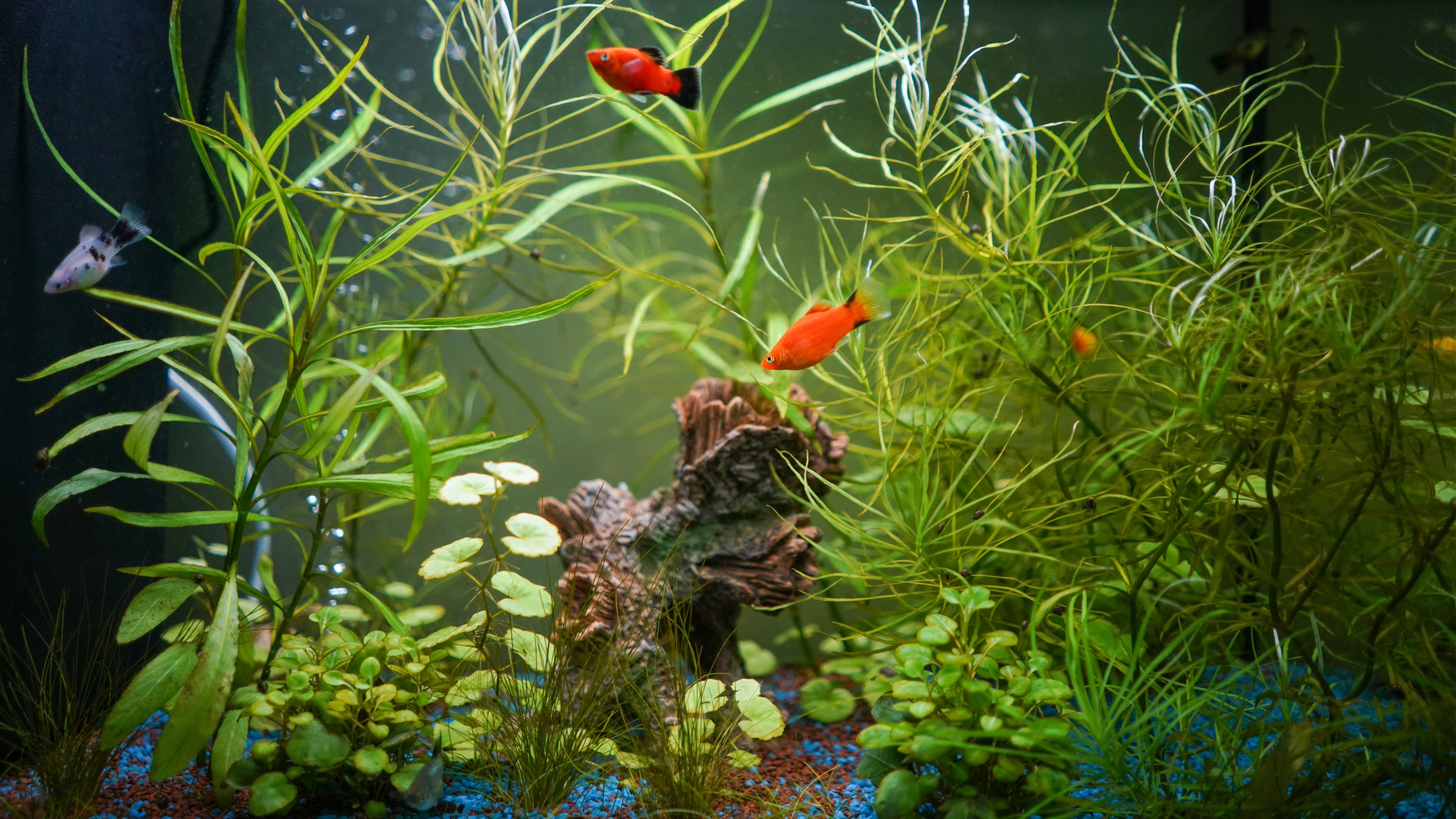
Looking for fish that clean the tank so that you don't have to spend so much time doing it for yourself? We've got you covered with these algae-eating species who will have your aquarium looking clean and sparkling in no time at all.
If you've ever found yourself wondering why your fish tank is cloudy, chances are that algae is to blame. While algae isn't actually a problem and rarely creates any health issues where your tank is concerned, there's no denying it can turn your aquarium into a mess.
Thankfully, there are dozens of species to choose from when it comes to fish that will help to clean your tank. These freshwater fish make a brilliant clean-up crew regardless of the size of your aquarium – just be sure to do your research to make sure you house fish of similar temperaments together to prevent fighting.
Fish that clean the tank
1. Sailfin Molly

Found in both freshwater and brackish waterways along the east coast of the US, the Sailfin Molly is a popular fish amongst those with home aquariums and for good reason – and their love of algae means they do a phenomenal job of keeping the tank clean.
They typically grow to around 3-4 inches in length, and they're generally peaceful, so they can be kept in community tanks with other non-aggressive species.
2. American Flagfish
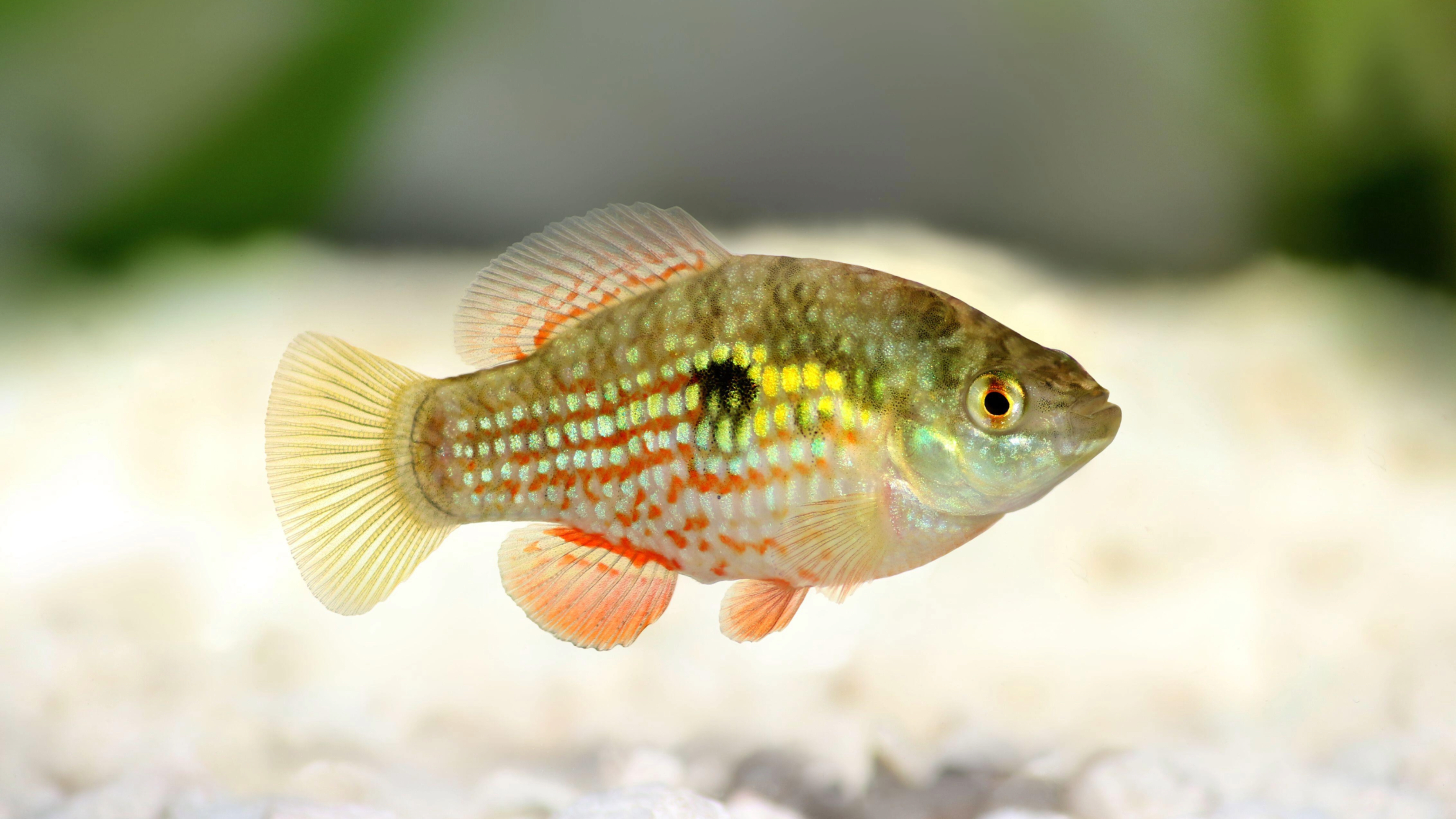
Endemic to Florida, the American Flagfish (sometimes also referred to as the Florida Flagfish) is a hardy, algae-eating species named for its colorful markings. A small fish that grows to around 2.5 inches in length, they're omnivores who like to be in aquariums that are densely planted with lots of floating cover.
They're peaceful when not in spawning mode and do best with tank mates who are similar in both temperament and size.
Get the best advice, tips and top tech for your beloved Pets
3. Siamese Algae Eater
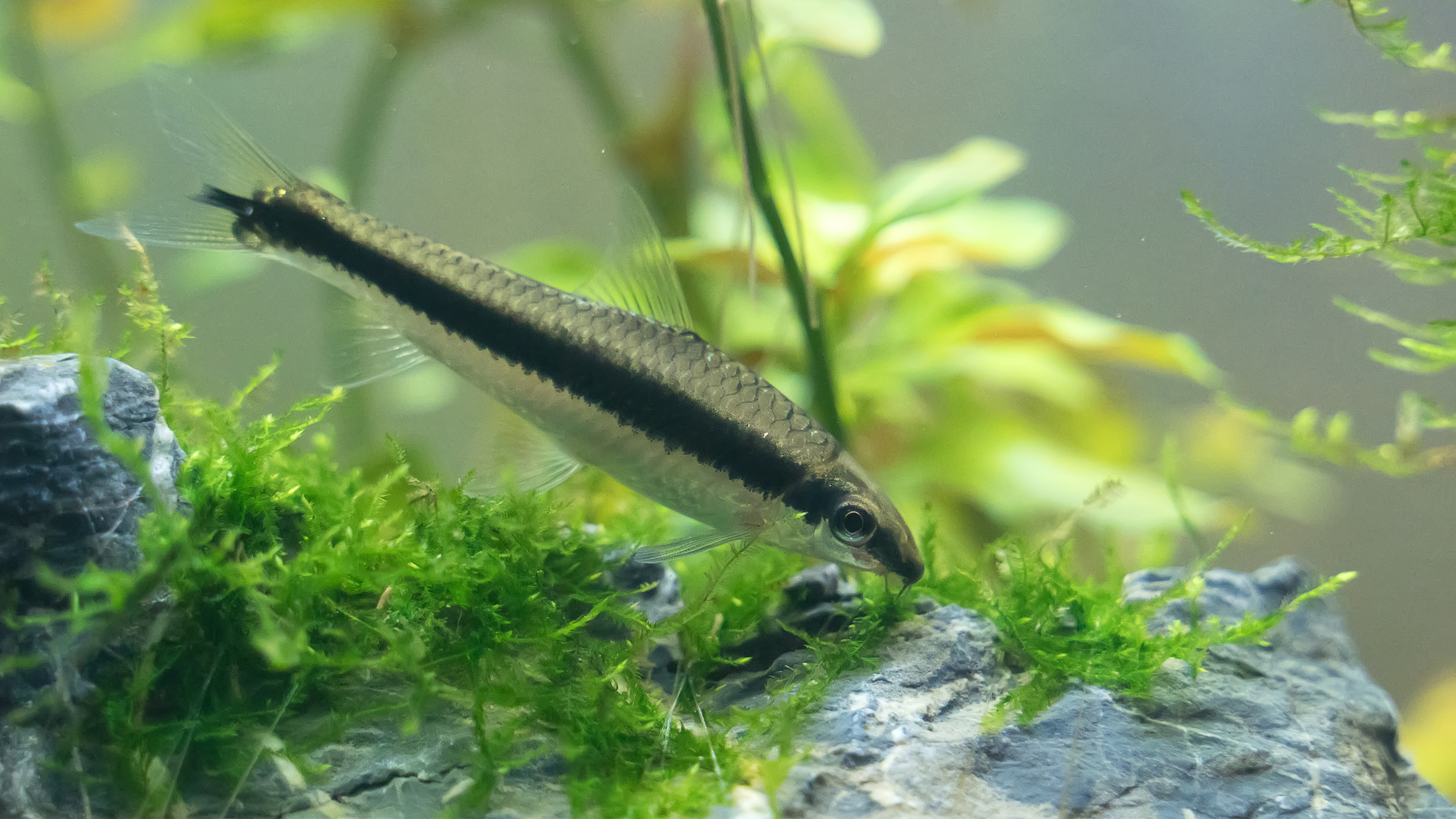
Looking for an outstanding algae-eating fish? Well, look no further than the Siamese Algae Eater, who has a name well suited to the job. Growing to around 6.5 inches, this species is found throughout Southeast Asia.
Siamese Algae Eaters to be kept either singly or in groups of five or more of their own kind to prevent aggression, and you'll want to make sure you have a tight lid on your aquarium, as they're known for their jumping skills.
4. Dwarf Sucking Catfish
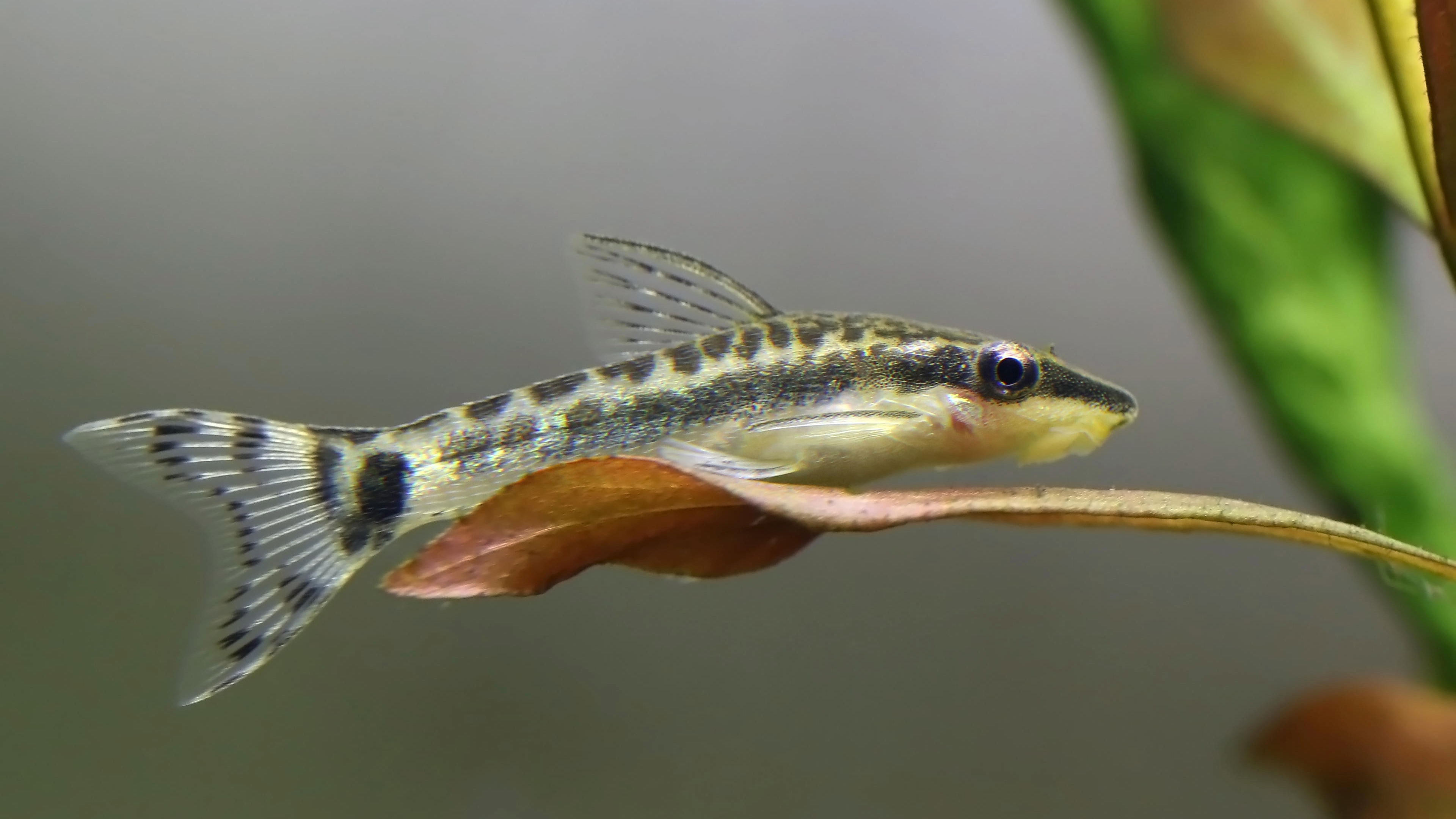
A small and placid fish that has a reputation for doing a great job of controlling brown algae, the Dwarf Sucking Catfish loves being part of a large group. They're a delicate species, so they need to be kept in mature aquariums that are rich in algae and biofilm to ensure their survival.
Dwarf Sucking Catfish are known for being shy, so they need lots of places they can hide, and they don't do well with aggressive tank mates.
5. Platy
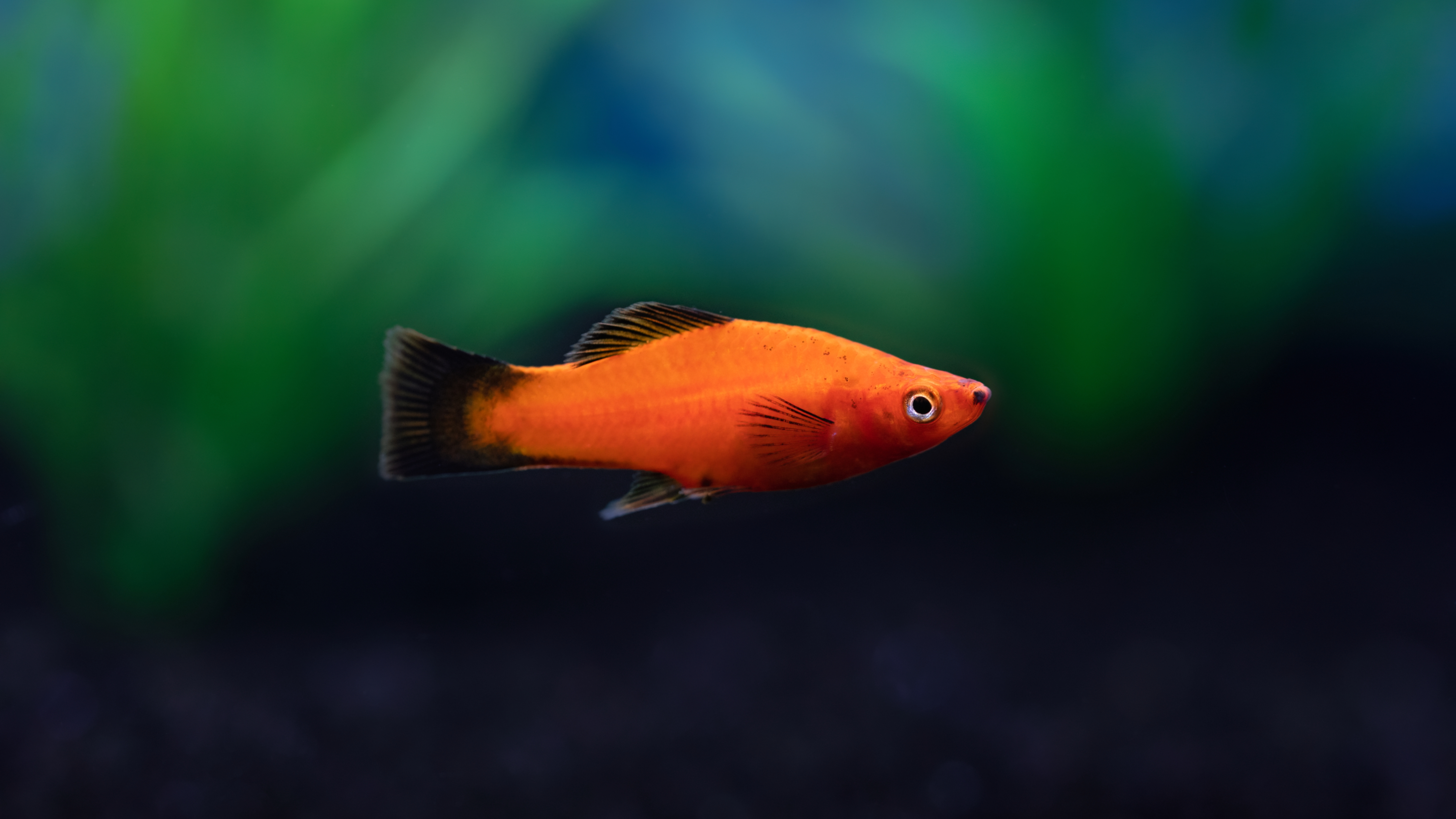
A freshwater fish found in Central America, the Platy is a social species who are great for beginners. Hardy, colorful, and easy to breed, Platies like slow-moving habitats with lots of vegetation, and they need hard water as they don't do well in acidic conditions.
It's worth noting that Platies should be kept in tanks where females outnumber males to prevent aggression and reduce the likelihood of males harassing females.
6. Siamese Flying Fox

Often confused with the Siamese Algae Eater, the Siamese Flying Fox is a species in its own right, and they are much more territorial and aggressive than Siamese Algae Eaters.
Reaching lengths of around 16 inches, they need to be kept singly unless you have a large aquarium that's well-furnished with lots of visual barriers. Native to the Indonesian islands of Borneo, Java, and Sumatra, these fish like good water movement and can be boisterous at feeding time.
7. Whiptail Catfish
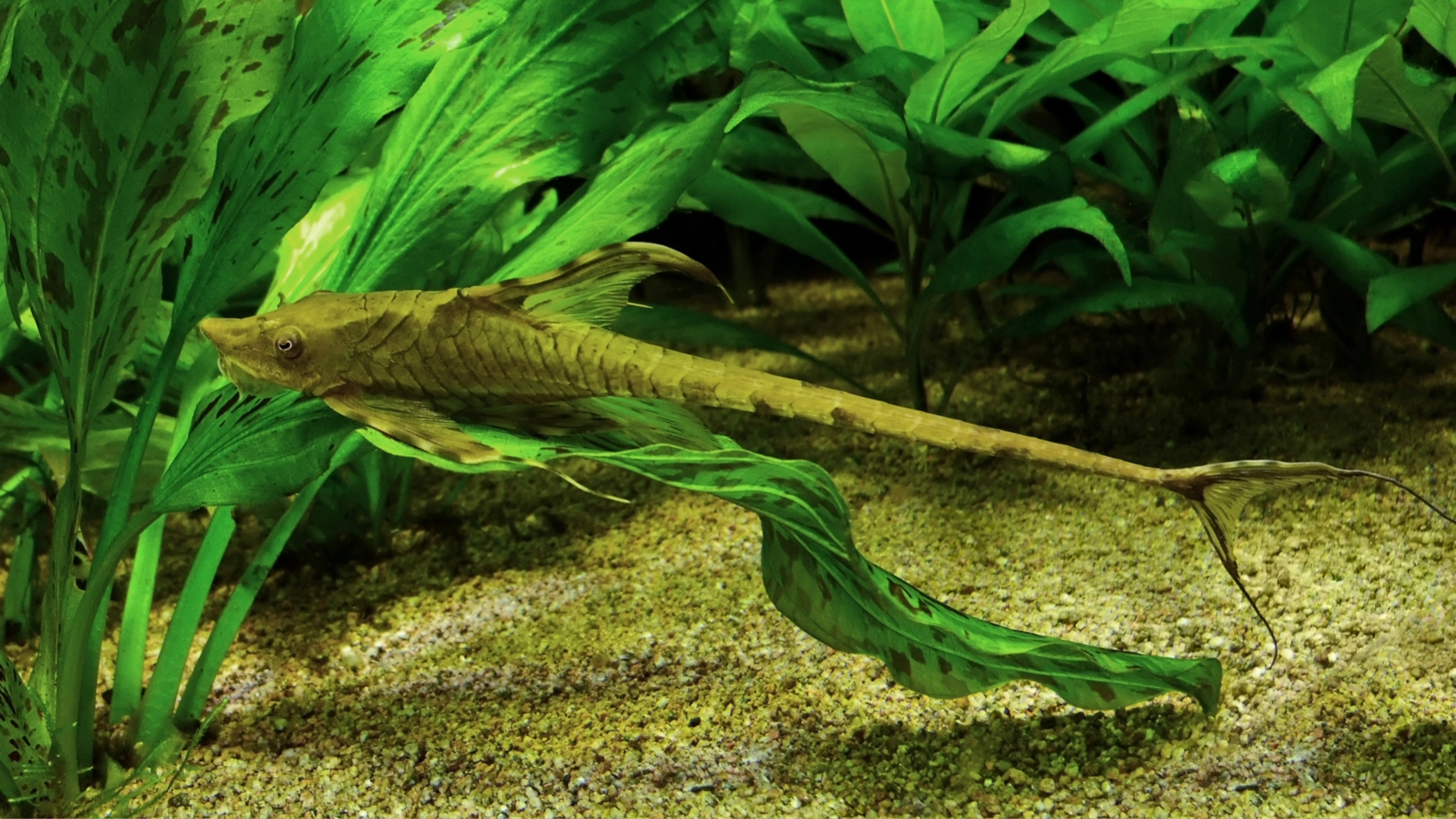
The Whiptail Catfish is a peaceful species that does well in a wide range of conditions. Found in the upper and middle Amazon, these fish like to be kept in groups in a mature tank where there are plenty of places for them to hide.
Because they're so tranquil, you'll want to avoid housing them with fish that are first in line at feeding time, as the Whiptail Catfish wouldn't be good at competing for food.
8. Corydoras
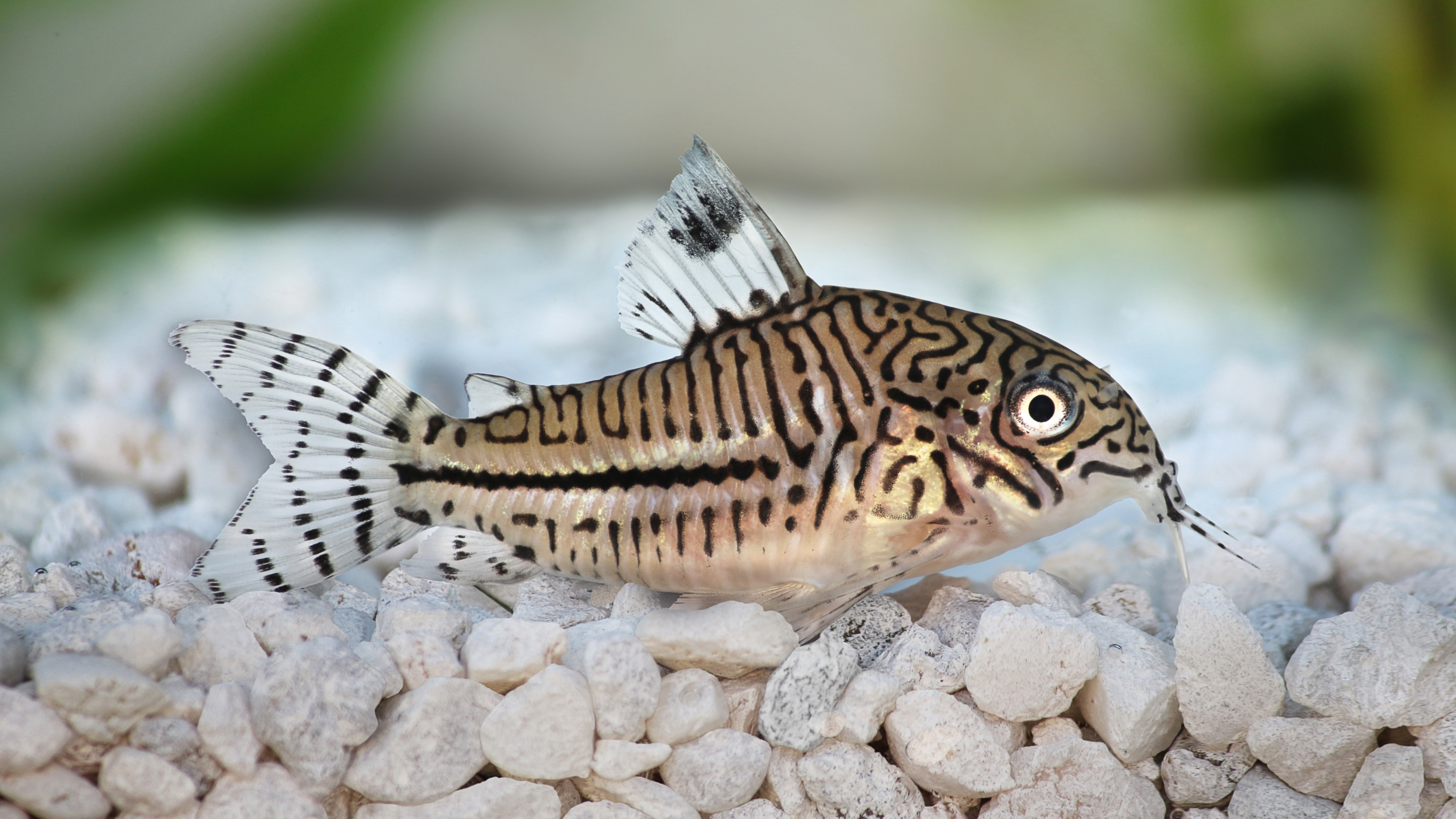
Often referred to as Corys, these social shoaling fish like to be kept in groups of five or more in a tank that has lots of sandy substrate that they can root around in. Popular due to their easygoing nature, Corys are great bottom-dwelling scavengers who will ensure the floor of your aquarium always looks sparkling.
A breeze to take care of, these catfish come in a range of different species and do best when housed with small to medium-sized fish.
9. Rainbow Shark
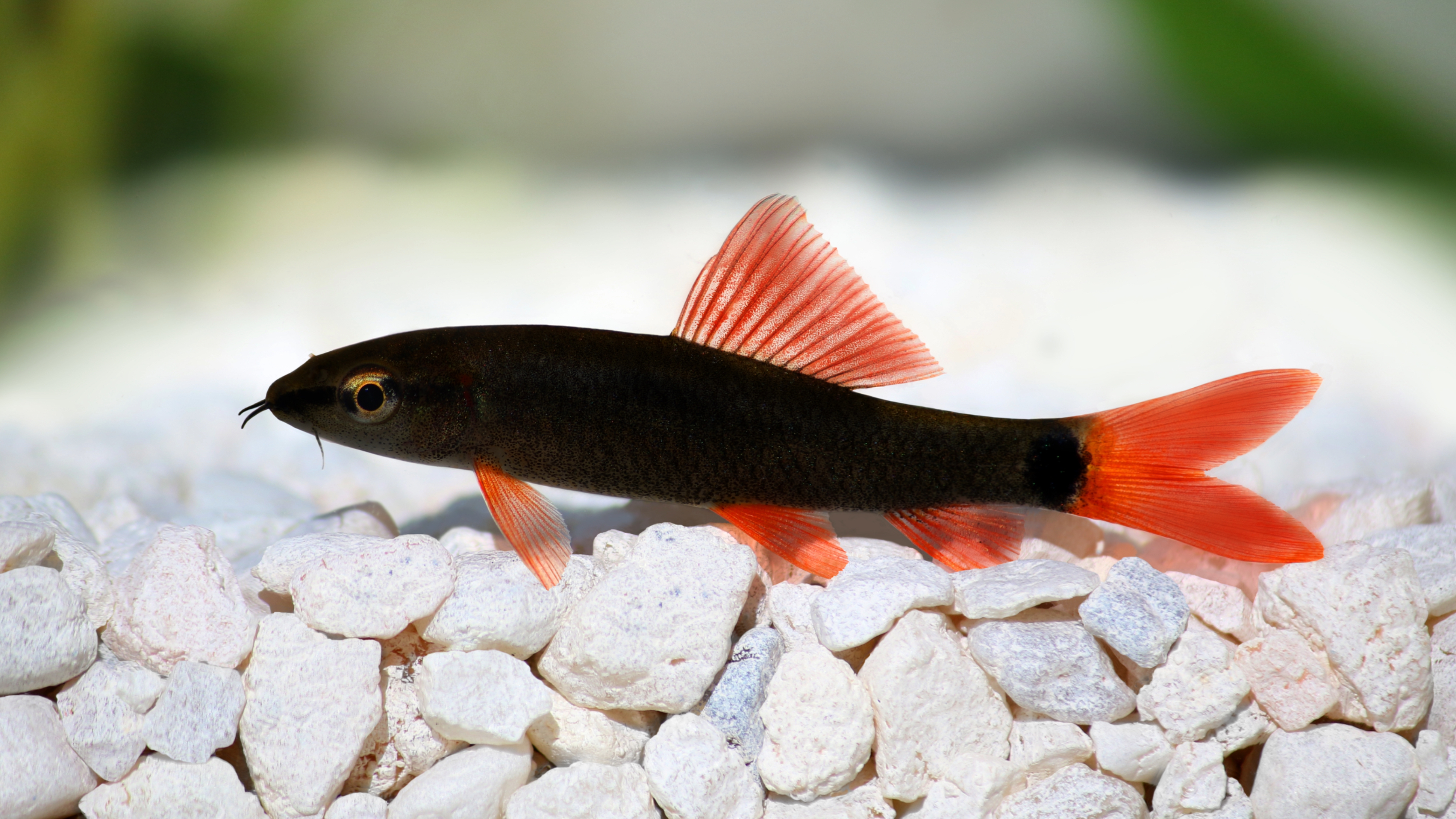
Found throughout South-East Asia, the Rainbow Shark is around six inches in length and loves having plenty of rocky caves and live plants that they can use to hide out in.
This species can be very territorial, so if you have a small tank, they need to be kept singly. However, if you have a spacious aquarium, then they'll do just fine in a large group of Rainbow Sharks with other boisterous fish for company.
While the name Rainbow Shark makes them sound predatory, they're not known for being aggressive with smaller fish and tend to leave them be.
10. Bristlenose Pleco
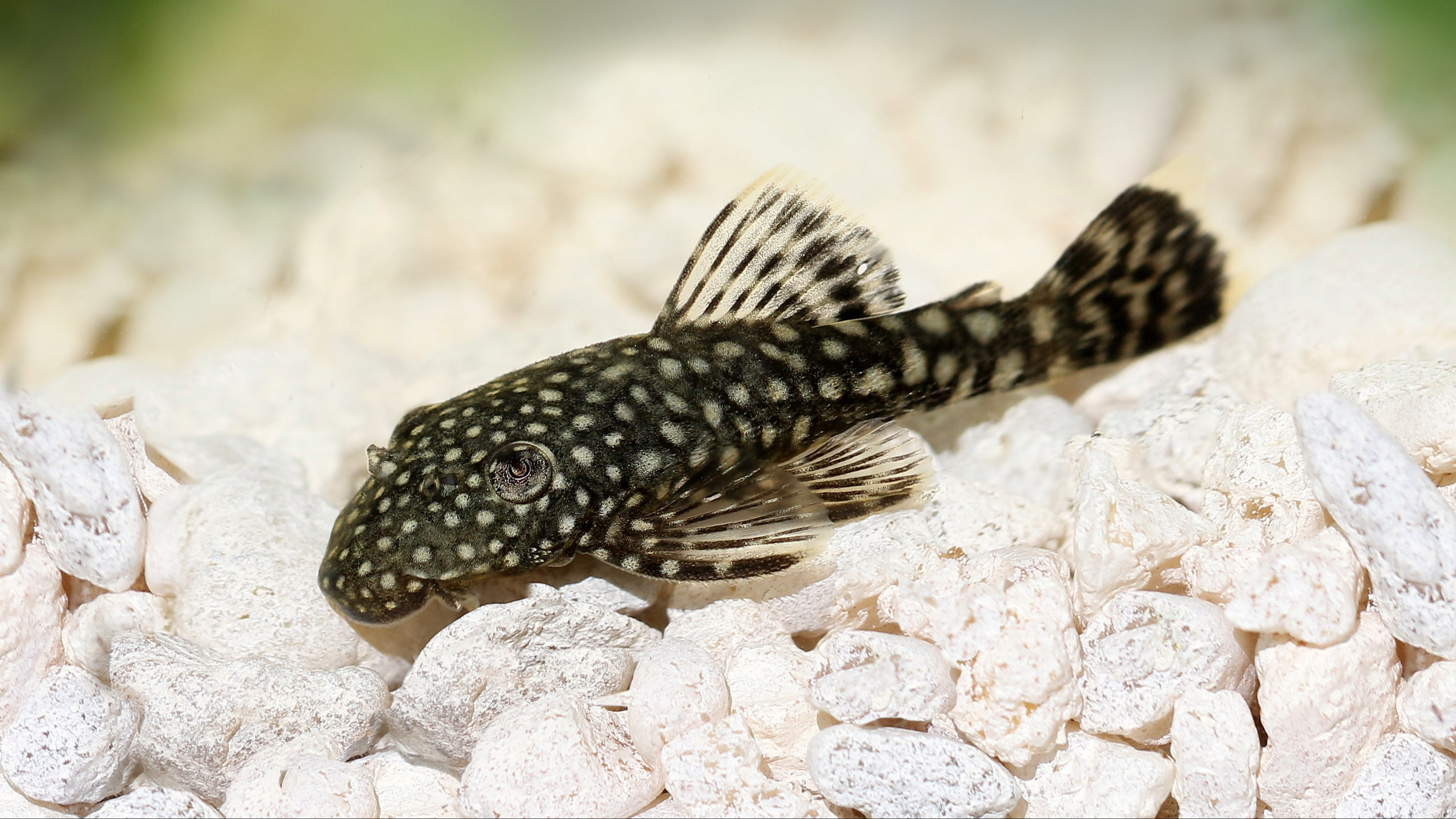
Native to rivers in South America, the peaceful Bristlenose Pleco is a fantastic algae eater who loves to live in a mature tank with a strong water current, lots of hiding places, and plenty of oxygenation.
One of the smallest catfish (they average just five inches in length), the Bristlenose Pleco earned its name from the tentacles around its snout, and its sucker-shaped mouth is brilliant for vacuuming up substrate and keeping your aquarium clean.
11. Reticulated Hillstream Loach
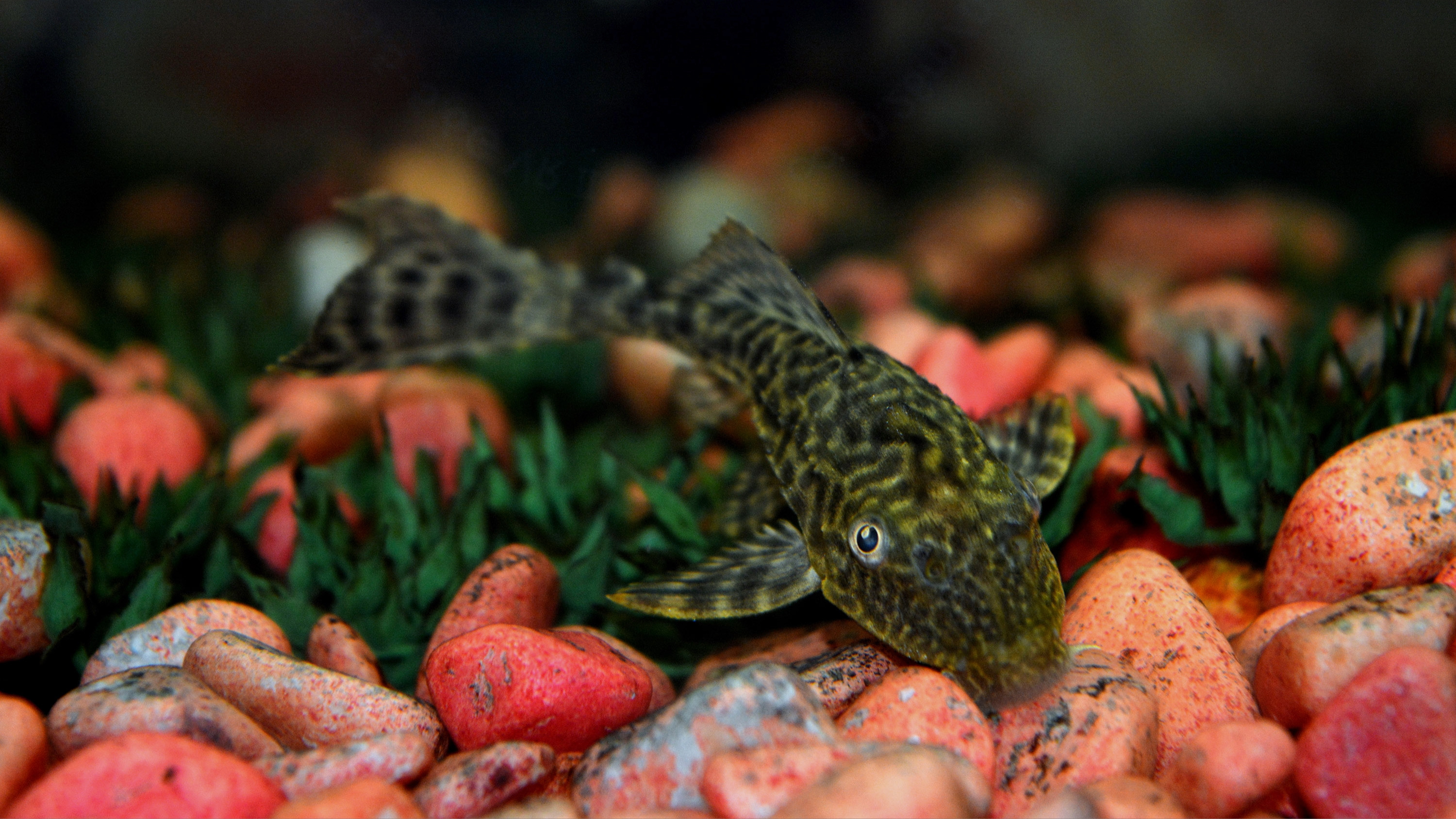
A striking, freshwater fish that loves fast-moving water, the Reticulated Hillstream Loach uses its pelvic fins as suction cups that enable it to attach to smooth rocks and stay put no matter how quickly the water flows over them.
If you want one of these fish in your tank, you'll want to make sure it's high velocity to mimic their natural environment and you'll want lots of flat rocks and hiding places – but don't worry, they'll reward you for all your hard work by munching on all the algae and keeping your tank very clean indeed.
12. Nerite Snails
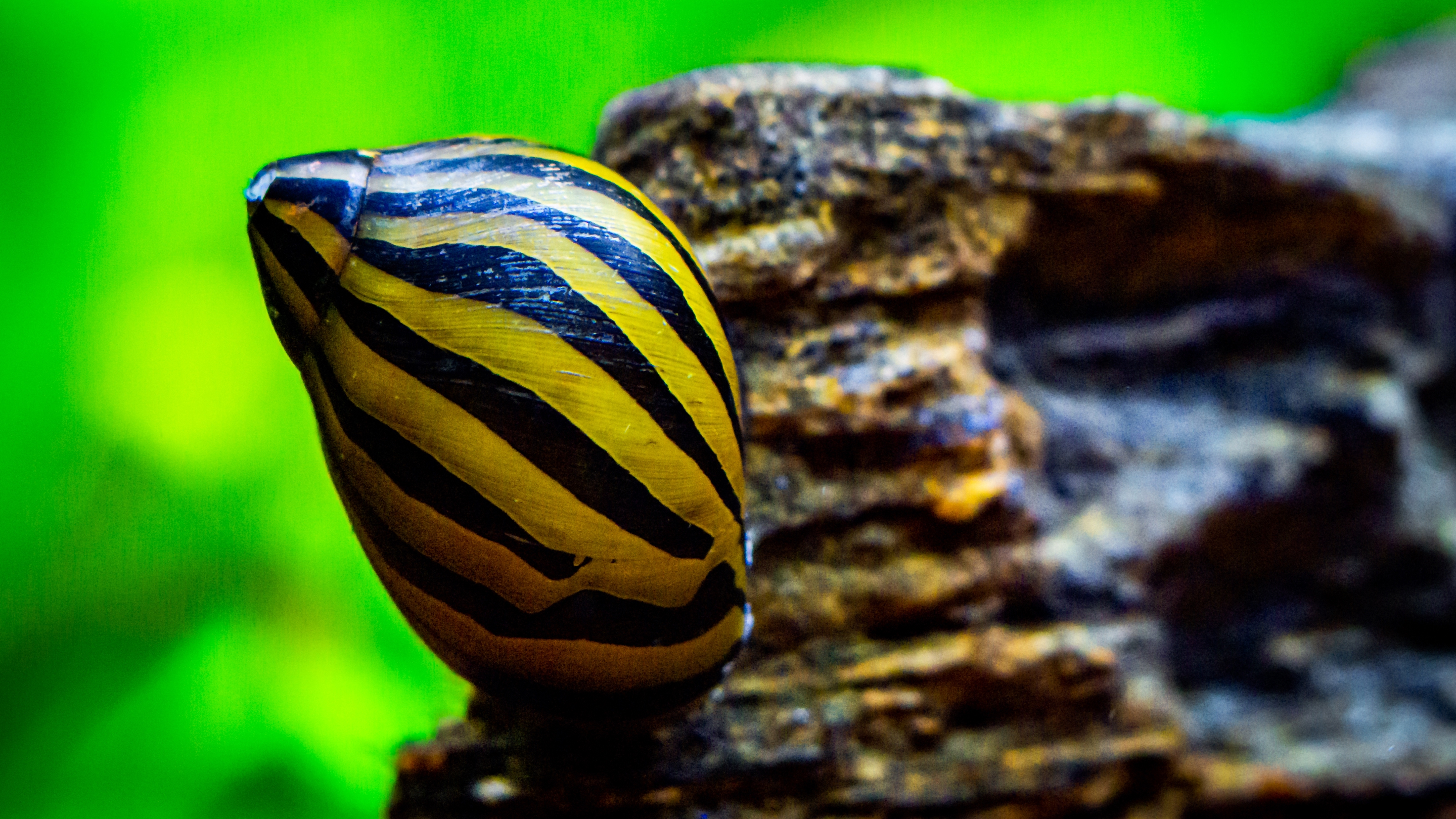
Okay, busted – it's technically not a fish, but you can't mention tank cleaning and not include Nerite Snails. The Zebra Nerite is particularly striking with its black and gold stripes, and the good news is that any plants you have in your aquarium will be completely safe, as these little beauties like to feast on algae.
Nerite Snails like mature and spacious tanks as well as hard, alkaline water to keep their shells in tip-top condition. You'll want to make sure their tank mates are calm and peaceful, taking care to avoid boisterous fish who may knock them over.
13. Panda Garra
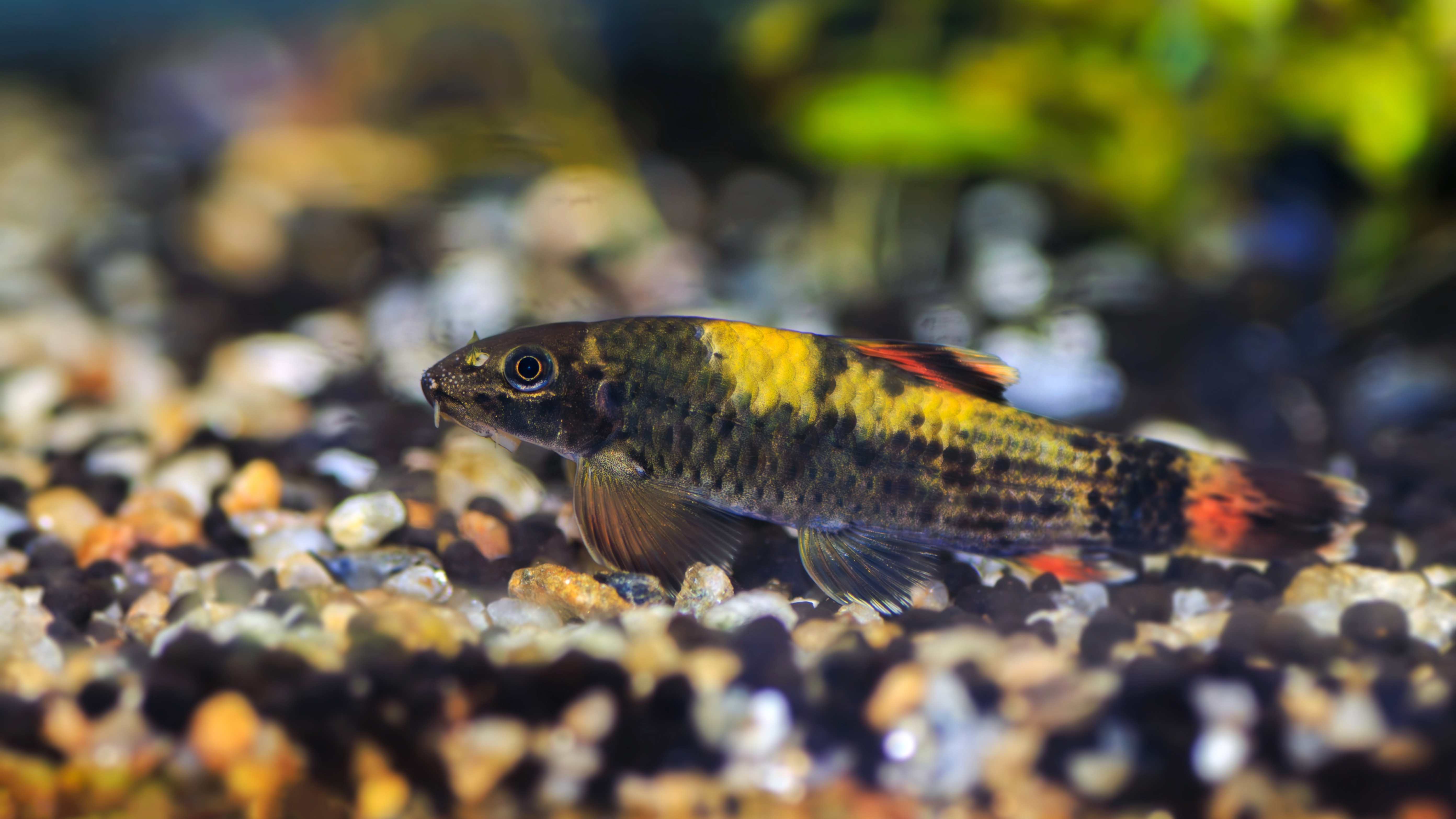
A robust, algae-devouring fish that hails from Myanmar, the Panda Garra loves fast-moving water and high oxygen levels. Relatively social, the Panda Garra likes to be kept in groups of five or more, which you'll want to adhere to, as any less than this and you may find these fish squabble amongst themselves.
Panda Garras like lots of sand or gravel substrate and plenty of cobbles and smooth rocks, plus you'll want to ensure your aquarium has a tight lid, as these little fish are very capable of climbing up the glass. While typically peaceful, they're boisterous at meal times, so avoid pairing them with slow-moving fish.
14. Rosy Barb

Rosy Barbs are popular fish and for good reason – these brightly colored creatures are active enough to keep you entertained while also being incredibly peaceful in nature. Rosy Barbs love being kept in groups of six or more and housed in a spacious aquarium with large open swimming spaces as well as some densely planted areas with fast-growing plants that they can nibble on.
Because of their lively nature, it's best not to house them with shy or quiet fish, and they are prone to nipping, so keep them separate from long-finned fish who are slow-moving.
15. Balloon Molly

Balloon Mollies (named after their very distinctive round body shape) are typically peaceful fish who do well in community tanks with species that have a similar temperament.
A prolific livebearer that can be found in freshwater and saltwater habitats, they love scavenging for leftovers and devouring algae, so they can be a fantastic addition to your tank cleaning crew. Because they love to breed, you'll want to ensure there are two to three females for every male, and they like spacious tanks with plenty of hiding places.
16. Twig Catfish
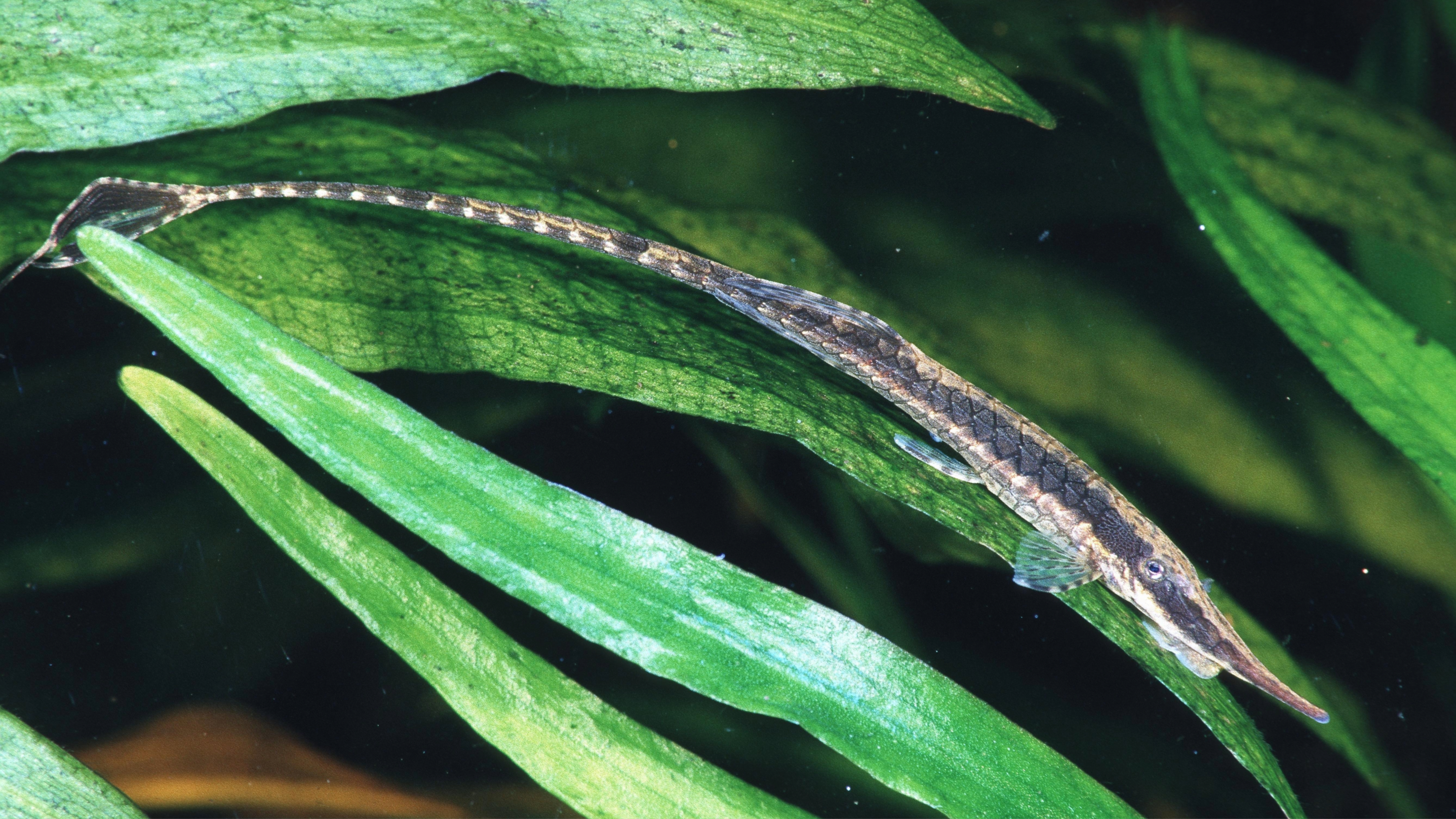
There's no getting around it – the Twig Catfish is one unique-looking creature! A lover of peaceful aquariums and algae-eating, this species grows to around seven inches in length and likes being housed in tanks where there are lots of shady hiding places.
Shy and tranquil, they're happy in large groups as long as the other fish in the tank all have the same peaceable nature.
17. Dalmatian Molly
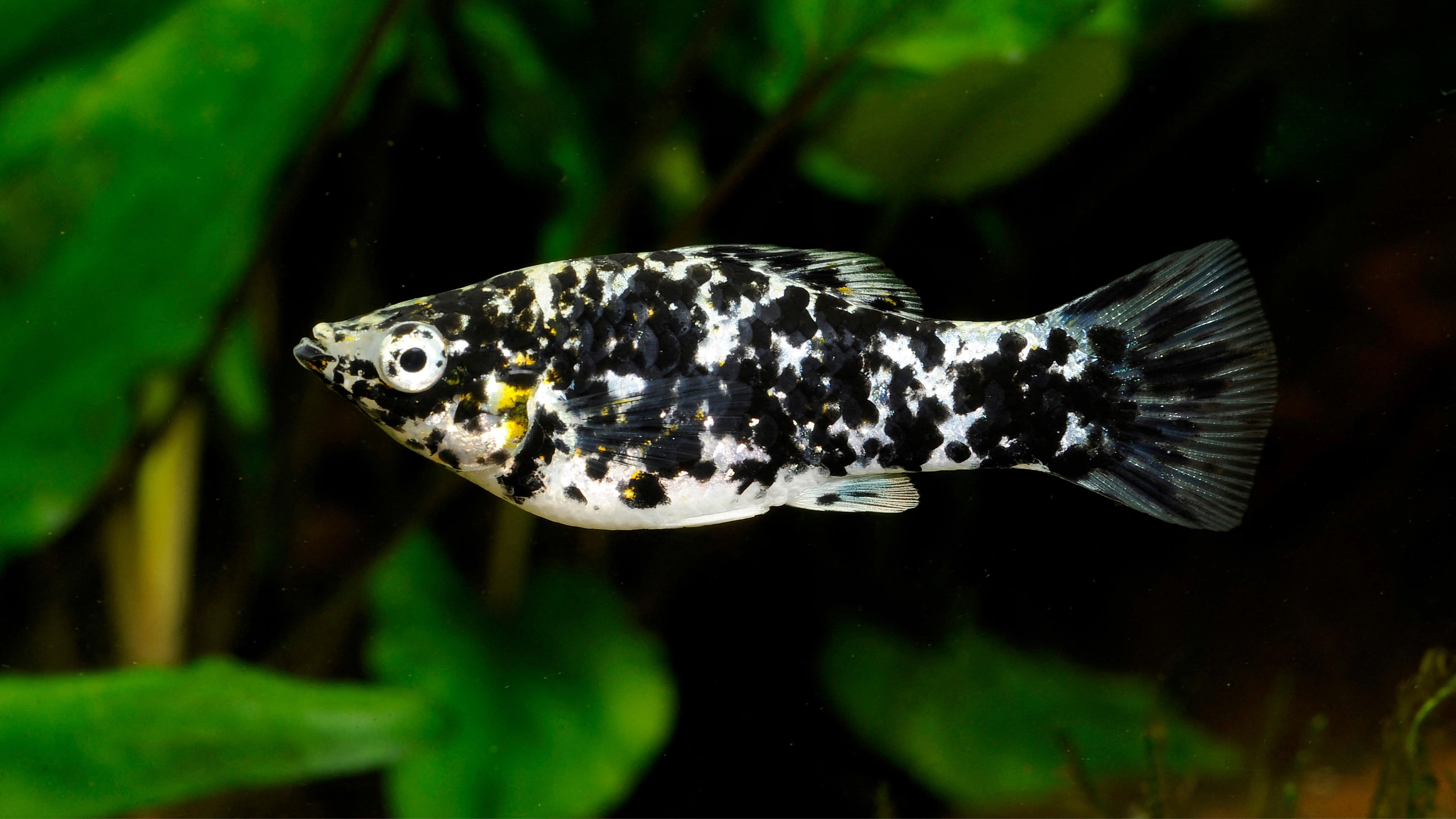
A super popular fish amongst home aquarium enthusiasts, the Dalmatian Molly is a lively species that loves to swim around in groups. Hardy fish who dine on plants and algae, they're relatively hardy, although they do prefer warmer water temperatures.
Peaceful mid-dwellers, the Dalmatian Molly typically gets on well with other tranquil, non-fin-nipping fish, and they're relatively resistant to disease.
18. Chinese Algae Eater
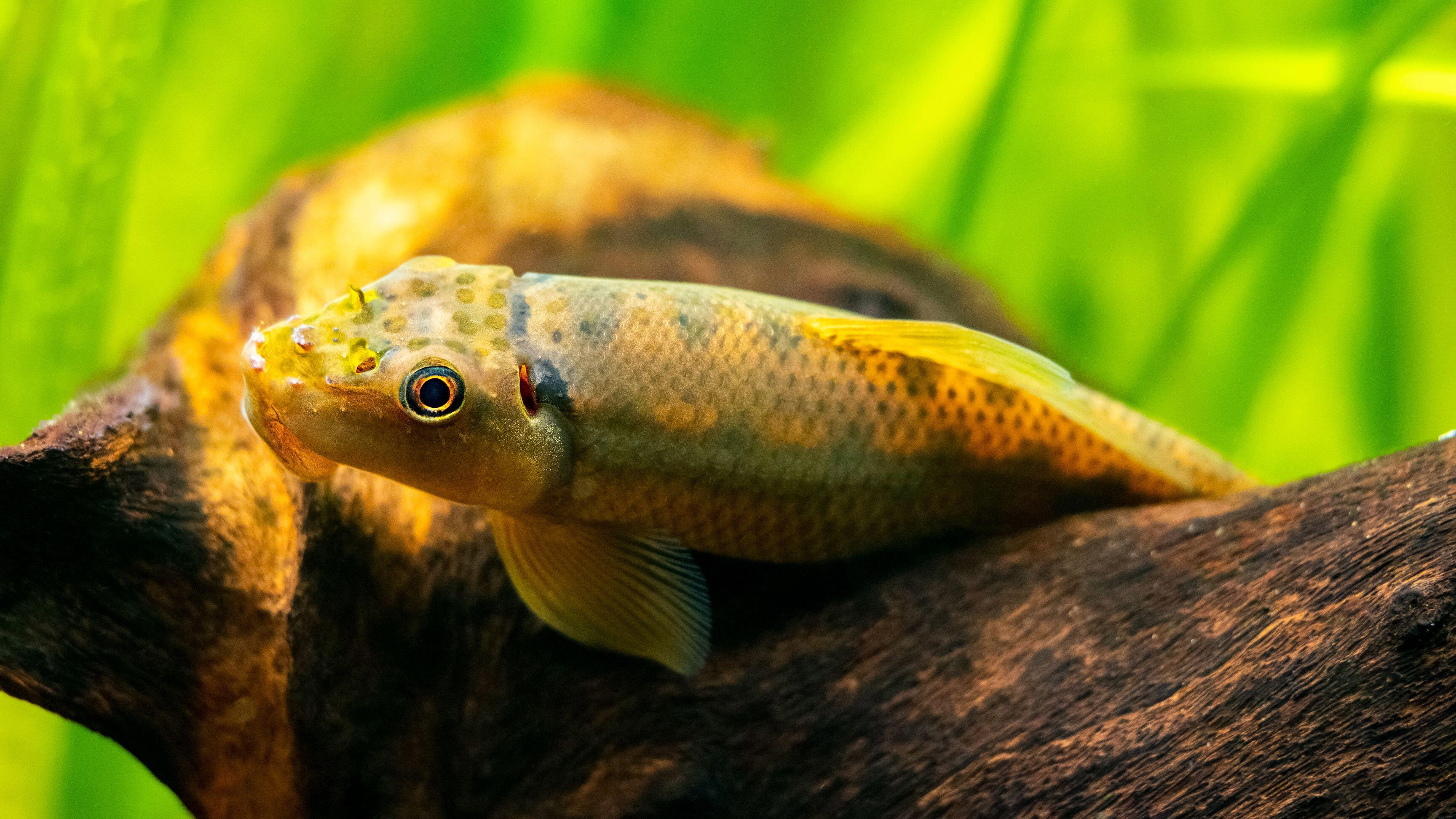
The Chinese Algae Eater (also sometimes called the Honey Sucker) is a territorial algae-eating fish that needs a large aquarium with a fast flow rate and plenty of smooth rocks and cobbles.
They should not be housed with peaceful, slow-moving, or long-finned fish, as unfortunately, they have a tendency to harass these species, so ensure tank mates are robust and fast-moving. Chinese Algae Eaters can also squabble amongst themselves, so you'll want to provide them with plenty of visual barriers and hiding places.
19. Clown Pleco
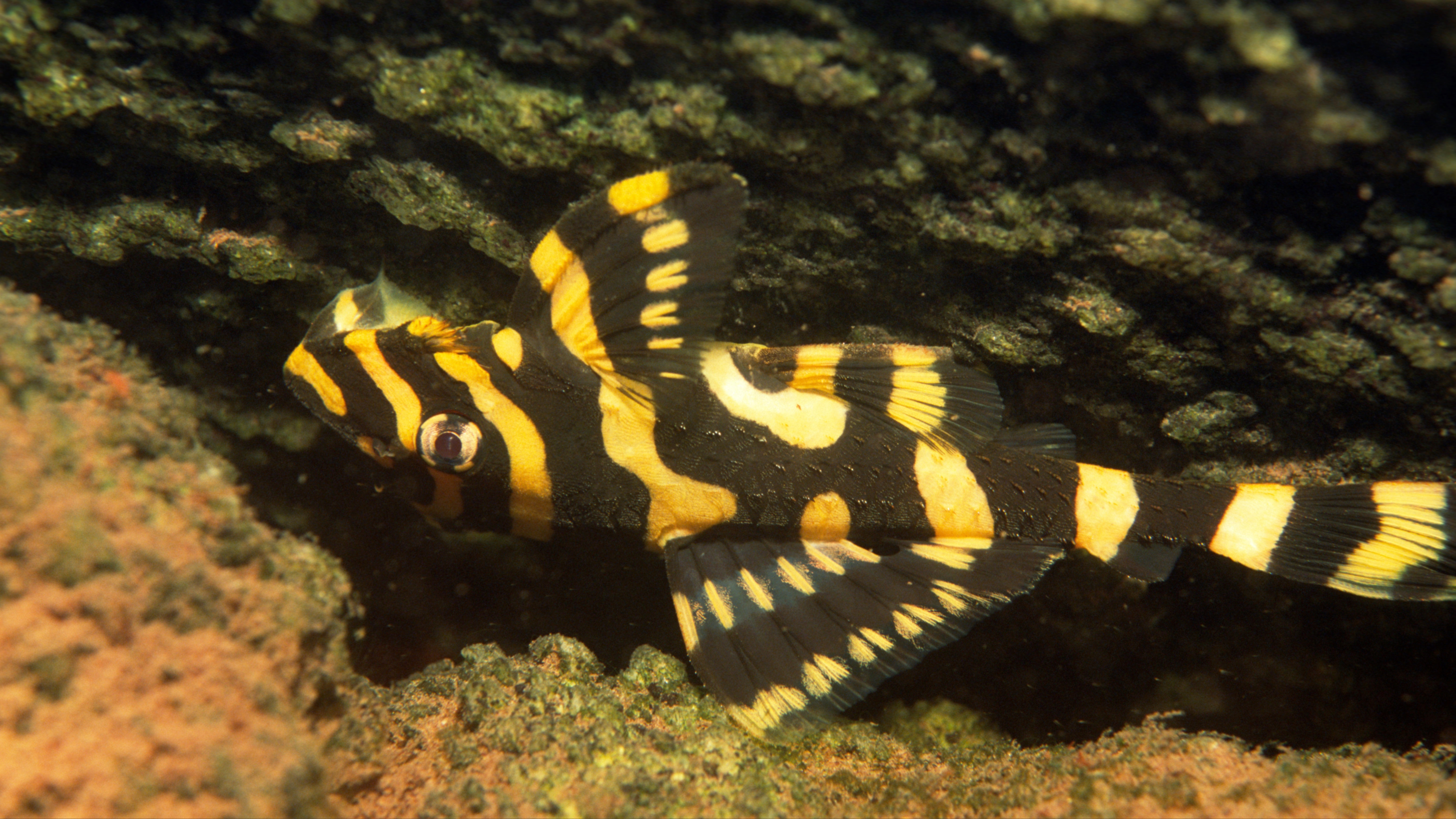
Measuring just 3.5 inches in length, the Clown Pleco is considered a dwarf species that is well-suited to smaller aquariums. They have a long life span where fish are concerned, with many Clown Plecos living for 10 years or more when well cared for.
They are a wood-eating species, so they need lots of bogwood to survive, and they like subdued lighting and shady places they can relax in. Peaceful towards other fish, they should be kept with quiet species for a harmonious living situation.
20. Black Molly
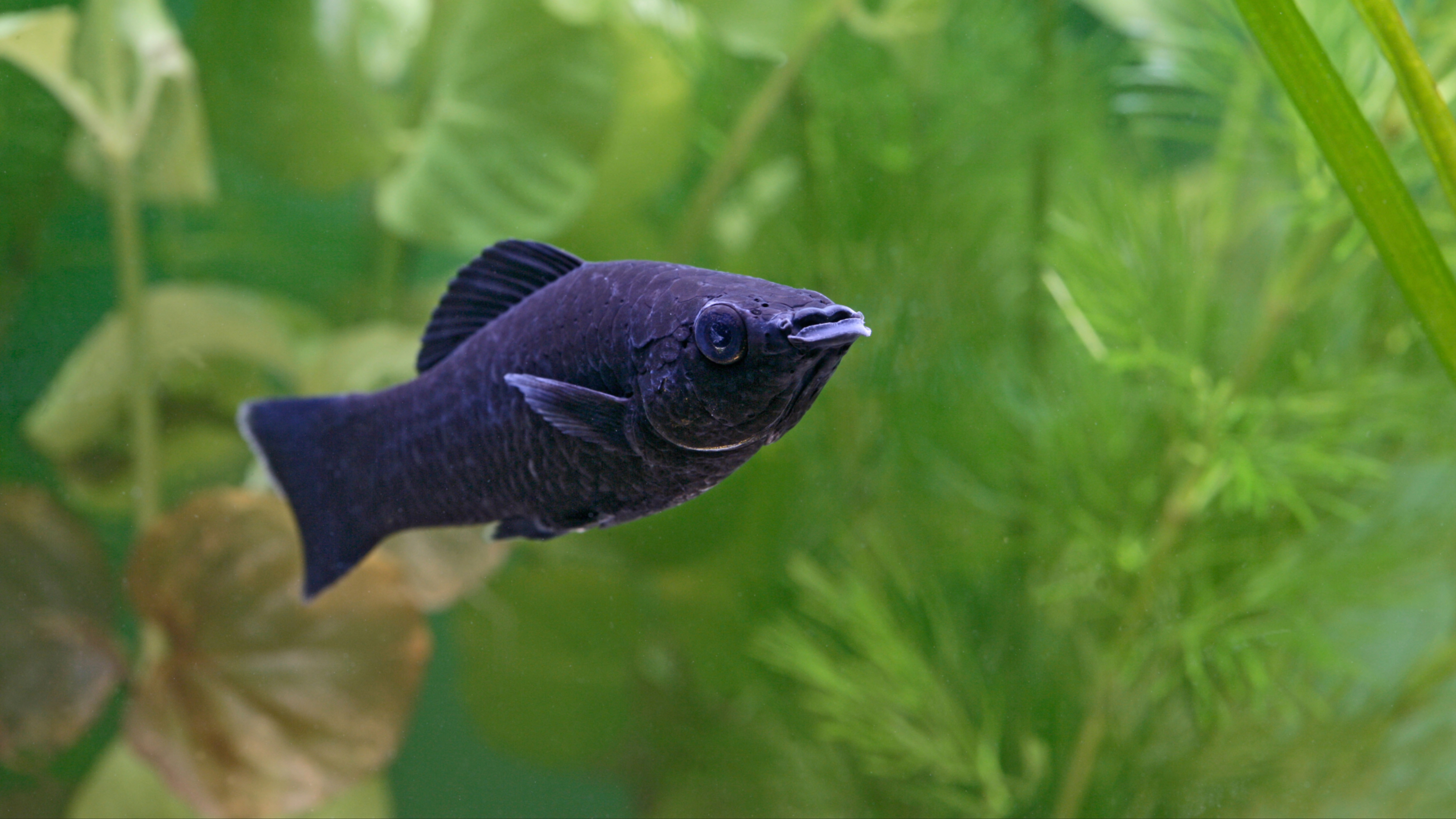
The Black Molly is a tropical, livebearing fish that hails from Central and South America, and while they thrive in freshwater, they can adapt to brackish or even saltwater environments if they have to.
Perfect for community tanks thanks to their peaceful nature, Black Mollies like to have a mix of open swimming spaces coupled with plants and hiding places. While Sailfin Mollies are the best algae eaters when it comes to this group of fish, Black Mollies are no slouches in this department and will do a good job of keeping your tank clean.
Edited by Georgia Guerin and Alexis De Leaver.
Last updated in August 2025.

Kathryn is a freelance writer who has been a member of the PetsRadar family since it launched in 2020. Highly experienced in her field, she's driven by a desire to provide pet parents with accurate, timely, and informative content that enables them to provide their fur friends with everything they need to thrive.
Kathryn works closely with vets and trainers to ensure all articles offer the most up-to-date information across a range of pet-related fields, from insights into health and behavior issues to tips on products and training.
When she’s not busy crafting the perfect sentence for her features, buying guides and news pieces, she can be found hanging out with her family (which includes one super sassy cat and a kitten), drinking copious amounts of Jasmine tea and reading all the books.
She has written for a range of publications, including Fit&Well, Top Ten Reviews, LiveScience, Goodto, and Product Hunt.
